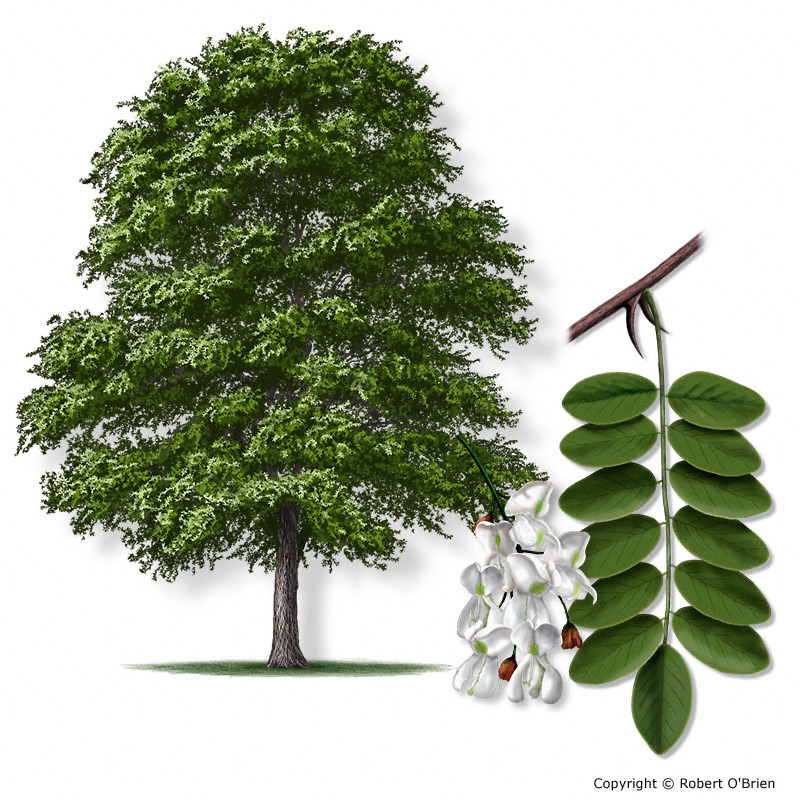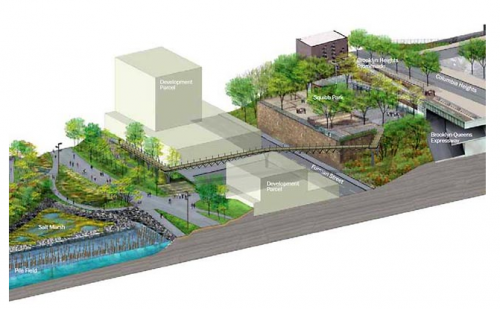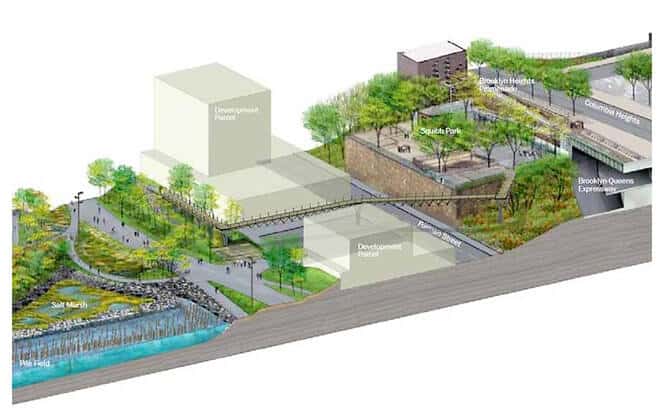After receiving a generous amount of funding, Brooklyn has commissioned a pedestrian walkway to connect Squibb Park and the Brooklyn Bridge Park. The 4.9 million dollar bridge will be designed by Ted Zoli, a MacArther Genius Award-winning structural engineer, he is not only one of the nation’s “it” engineers but also among the nation’s foremost experts on “terror-proofing.”
As a New York green builder we were interested in this project based on their choice of material. Metal? Nope.
Zoli’s vision of this sustainable design is grounded in an old-fashioned material: wood. And not just any wood: Black Locust. Zoli attempts to create a prototype for modern sustainable design techniques. Long-lasting, rot resistance materials are a pivotal element for the future of sustainable and green bridge designs.

Eco Brooklyn loves black locusts because they are native to the Southeast, Mid-Atlantic and Northeast. Black locust is known for its rot-resistance, durability and its sustainable nature. The rough-sawn decking and wooden structural elements will be coated with a natural finish that changes color and often warps slightly when exposed to natural elements.
In many places the tree is actually considered a pest and they regularly cut them down along roadways. Using something that normally is considered garbage is the ultimate green green builders goal. New York green contractors constantly reuse discarded brick and old joists. By using black locust Zoli is continuing that tradition.
Zoli did not only choose the Block locust building material because it is native to the Northeast but also because is a prominent feature in the Brooklyn Bridge Park landscape. Zoli is attempting to expand upon the language of the Brooklyn Bridge Park by incorporating some of the materials like Black Locust and wire into his own design.
The combination of natural, durable materials and smart design seem to be the foundation and future for this new generation of bridge designs that center around sustainability. The Squibb design is just one stepping stone for the use of rot-resistant natural building materials in vernacular bridges.
The 396-foot-long bridge, with two main spans of 120 feet will connect a small-paved park at the north end of the historic Brooklyn Heights Promenade with the Brooklyn Bridge Park, originally designed by Michael Ban Valkenburgh.
This bridge, which will hover above Furman Street will zig zag through the existing tall oaks and between two buildings while descending 30 ft in elevation from its starting point to its endpoint in Brooklyn Bridge Park.
The bridge will be supported by poured concrete pillars and suspended by steel cables; the primary construction material will be 6- and 10-inch diameter pieces of Robinia pseudoacacia or black locust.
Despite the detachment from the typical urban bridge, which is usually metal and gritty, Zoli’s design is a seamless combination of the rural and the industrial.
This bridge is an incredible addition to the Brooklyn community for multiple reasons. It functions to reconnect pedestrians to the Brooklyn Bridge Park which is currently isolated by roads but will also serve as a prototype for urban design using natural material rather than metals and synthetics.
 One major component of sustainable design is finding long lasting materials. If we are able to learn about and utilize some of trees in our own regions then green builders will be able to save energy through shorter transportation distances and become less wasteful in the creation of new manmade materials.
One major component of sustainable design is finding long lasting materials. If we are able to learn about and utilize some of trees in our own regions then green builders will be able to save energy through shorter transportation distances and become less wasteful in the creation of new manmade materials.

